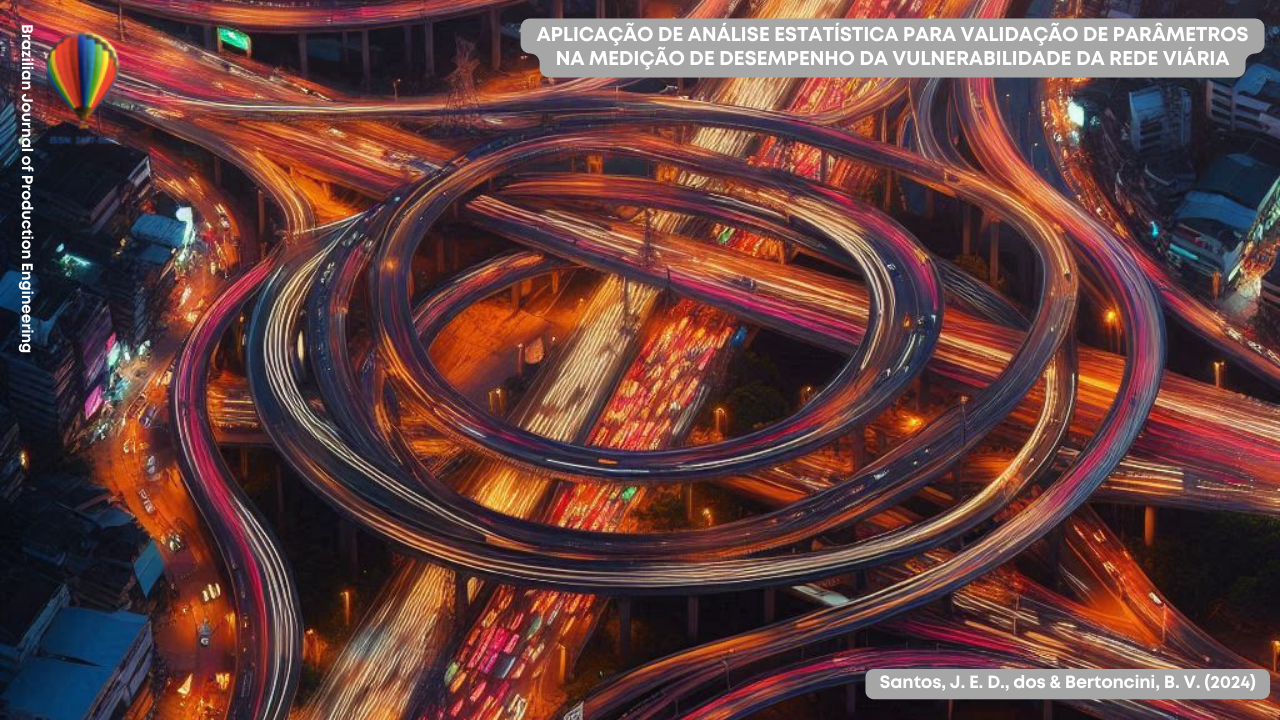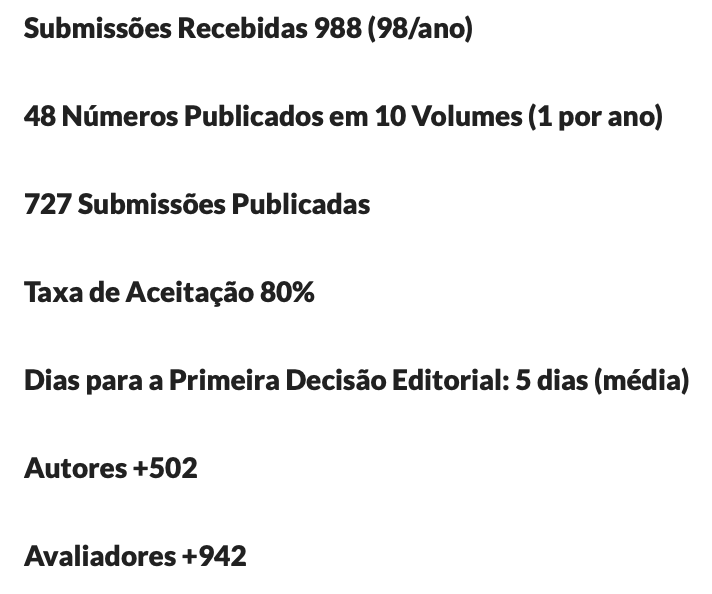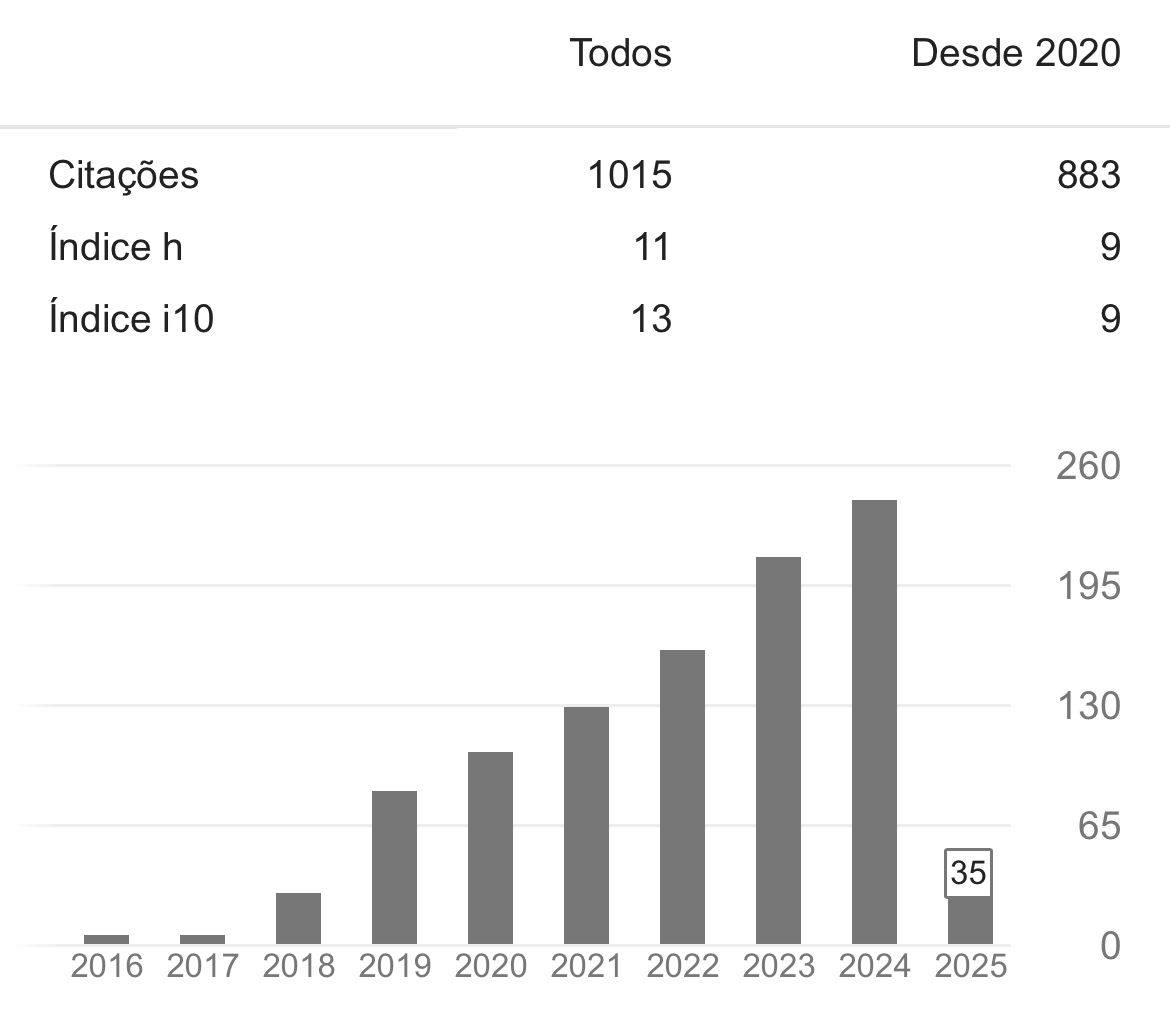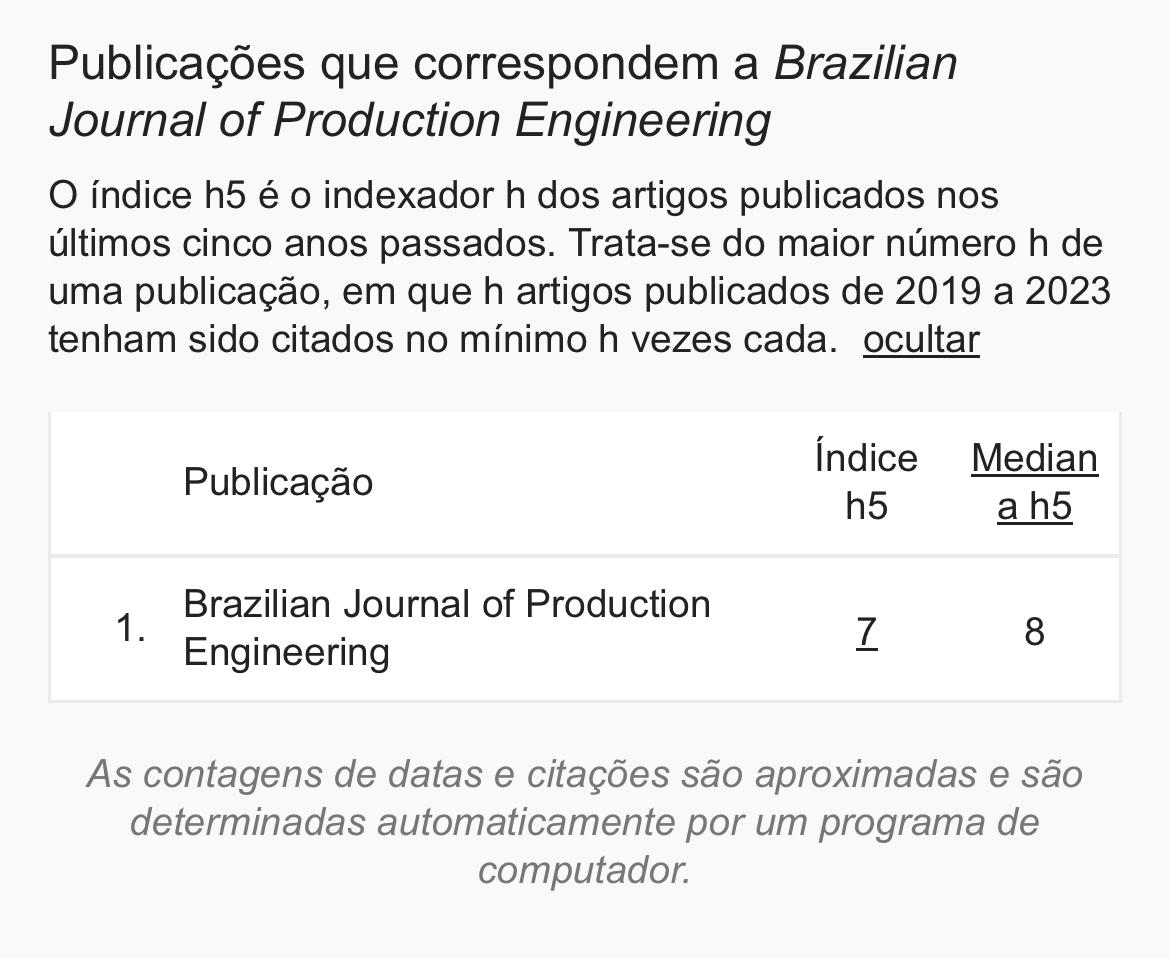Aplicação de análise estatística para validação de parâmetros na medição de desempenho da vulnerabilidade da rede viária
DOI:
https://doi.org/10.47456/bjpe.v10i2.44663Palavras-chave:
Vulnerabilidade da Rede Viária, Parâmetros de Desempenho, Análise Estatística, Topologia, Planejamento UrbanoResumo
A forma da rede viária influencia o tempo de viagem dos usuários em situações de interrupções. Estudos sobre a vulnerabilidade da rede viária geralmente não consideram essa característica, o que pode levar a conclusões incorretas. O objetivo deste trabalho é o de analisar o impacto da escolha do parâmetro de desempenho na avaliação da vulnerabilidade, utilizando redes regulares e irregulares como modelos. Para isso, este trabalho consistiu de uma revisão da literatura sobre topologia viária e vulnerabilidade da rede viária, da modelagem e simulação de dois cenários e da análise dos resultados utilizando estatística descritiva e testes paramétricos. O tempo de viagem se mostrou um parâmetro sensível à forma da rede, com a rede irregular apresentando tempos de viagem maiores que a rede regular. Já os parâmetros fluxo e velocidade não apresentaram diferenças significativas entre as redes. A escolha de parâmetros adequados é crucial para entender o impacto das interrupções no sistema de transporte. O tempo de viagem, sendo sensível à forma da rede, deve ser considerado no planejamento e na gestão de redes viárias. Os resultados deste estudo auxiliam nas decisões por parte dos gestores públicos, na comunicação com a sociedade e no desenvolvimento de cidades mais resilientes.
Downloads
Referências
Acuto, F., Coelho, M. C., Fernandes, P., Giufrrè, T., Macioszek, E., & Granà, A. (2022). Assessing the Environmental Performances of Urban Roundabouts Using the VSP Methodology and AIMSUN. Energies, 15, 1371. https://doi.org/10.3390/en15041371. DOI: https://doi.org/10.3390/en15041371
Ariza-Álvarez, A., Soria-Lara, J. A., & Aguilera-Benavente, F. (2022). Planning Adaptive Strategies for Urban Transport and Land Use using Scenario-Building. XXV International Conference Living and Walking in Cities - New scenarios for safe mobility in urban areas (LWC 2021), 9-10 September 2021, Brescia, Italy. Transportation Research Procedia 60, 274-281. https://doi.org/10.1016/j.trpro.2021.12.036 DOI: https://doi.org/10.1016/j.trpro.2021.12.036
Balijepalli, C. & Oppong, O. (2014). Measuring vulnerability of road network considering the extent of serviceability of critical road links in urban areas. Journal of Transport Geography, 39, 145-155. https://doi.org/10.1016/j.jtrangeo.2014.06.025 DOI: https://doi.org/10.1016/j.jtrangeo.2014.06.025
Berdica, K. (2002). An introduction to road vulnerability: what has been done, is done and should be done. Transport Policy, 9(2), 117-127. https://doi.org/10.1016/j.trpro.2021.12.036 DOI: https://doi.org/10.1016/S0967-070X(02)00011-2
Bešinović, N. (2020). Resilience in railway transport systems: a literature review and research agenda. Transportation Review, 1-22. https://doi.org/10.1080/01441647.2020.1728419 DOI: https://doi.org/10.1080/01441647.2020.1728419
Cats O. & Jenelius E. (2016). Beyond a complete failure: the impact of partial capacity degradation on public transport network vulnerability. Transportmeter B, 6(2), 77-96. DOI: https://doi.org/10.1080/21680566.2016.1267596
Cats, O., Koppenol, G. .J., & Warnier, M. (2017). Robustness assessment of link capacity reduction for complex networks: Application for public transport systems. Reliability Engineering System Safety, 167, 544-553. https://doi.org/10.1080/21680566.2016.1149260 DOI: https://doi.org/10.1016/j.ress.2017.07.009
Cavalcante, A. P. H. (2009). A Arquitetura da Cidade e os Transportes: O Caso dos Congestionamentos em Fortaleza, Ceará. Antonio Paulo de Hollanda Cavalcante. – Brasília: PPG/FAU/UnB. 347p.: 118 il.
Chen, A., Yang, C., & Kongsomsaksakul, S., Lee, M. (2007). Network-based Accessibility Measures for Vulnerability Analysis of Degradable Transportation Networks. Network Spatial Economic, 7, 241-256. https://doi.org/10.1007/s11067-006-9016-4 DOI: https://doi.org/10.1007/s11067-006-9012-5
Comes, T., Warnier, M., Feil, W., & Van de Walle, B. (2020). Critical airport infrastructure disaster resilience: A framework and simulation model for rapid adaptation. Journal Management Engineering, 36(5), 04020059. https://doi.org/10.1061/(ASCE)ME.1943-5479.0000810 DOI: https://doi.org/10.1061/(ASCE)ME.1943-5479.0000798
Demir, E., Bektas, T., & Laporte, G. (2014). A review of recent research on green road freight transportation. Eur. J. Oper. Res., 237, 775-793. https://doi.org/10.1016/j.ejor.2013.12.033 DOI: https://doi.org/10.1016/j.ejor.2013.12.033
Duan, Y. & Lu, F. (2015). Robustness analysis of city road network at different granularities, in: Space-Time Integration in Geography and GIScience: Research Frontiers in the US and China, Vol. 411, Elsevier B.V., pp. 127-143. DOI: https://doi.org/10.1007/978-94-017-9205-9_8
Dunn, S. & Wilkinson, S.M. (2016). Increasing the resilience of air traffic networks using a network graph theory approach. Transp. Res. E, 90 39-50. https://doi.org/10.1016/j.tre.2016.02.007 DOI: https://doi.org/10.1016/j.tre.2015.09.011
Esfeh, M. A., Kattan, L., Lam, W. H. K., Safari, M., & Esfe, R. A. (2020). Road network vulnerability analysis considering the probability and consequence of disruptive events: A spatiotemporal incident impact approach. Transportation Research Part C 136. https://doi.org/10.1016/j.trc.2020.102560
Gao L., Liu, X., Liu, Y., Wang, P., Deng, M., Zhu, Q., & Li, H. (2019). Measuring road network topology vulnerability by Ricci curvature. Physica A, 527, 121071. https://doi.org/10.1016/j.physa.2019.04.241
Gao, L., Xu, L., Sun, G., & Shi, Y. (2019). Vulnerability analysis of urban road network from a resilience perspective. Physica A: Statistical Mechanics and its Applications, 526, 120828. https://doi.org/10.1016/j.physa.2019.121071 DOI: https://doi.org/10.1016/j.physa.2019.121071
Gu, Y., Fu, X., Liu, Z., Xu, X., & Chen, A. (2019). Performance of transportation network under perturbations: Reliability, vulnerability, and resilience. Transportation Research E, 1-16. https://doi.org/10.1016/j.tre.2019.01.001 DOI: https://doi.org/10.1016/j.tre.2019.11.003
Guidotti, R., Gardoni, P., & Chen, Y. (2017). Network reliability analysis with link and nodal weights and auxiliary nodes. Structure Safety, 65. https://doi.org/10.1016/j.strusafe.2017.01.007 DOI: https://doi.org/10.1016/j.strusafe.2016.12.001
He, S., Yu, S., Li, G., & Zhang, J. (2020). Exploring the influence of urban form on land-use efficiency from a spatiotemporal heterogeneity perspective: Evidence from 336 Chinese cities. Land Use Policy, 95. https://doi.org/10.1016/j.landusepol.2020.104624 DOI: https://doi.org/10.1016/j.landusepol.2020.104576
Hong L., Ouyang M., Xu M., & Hu P. (2020). Time-varied accessibility and vulnerability analysis of integrated metro and high-speed rail systems. Reliability Engineer System Safety, 193 1-10. https://doi.org/10.1016/j.tranpol.2020.08.012] DOI: https://doi.org/10.1016/j.ress.2019.106622
Hong, L., Cong, H., & Zhang, S. (2020). A hybrid method for urban road network vulnerability analysis. Transport Policy, 99, 121-131. https://doi.org/10.1016/j.tranpol.
Husdal, J. (2004). Reliability/vulnerability versus costs/benefits, in: ETC 2004.
Jenelius, E., Petersen T., & Mattsson, L. (2006), “Importance and exposure in road network vulnerability analysis”. Transportation Research Part A, 40, 537-560. https://doi.org/10.1016/j.tra.2005.11.003 DOI: https://doi.org/10.1016/j.tra.2005.11.003
Jun-qiang, L., Jing, Z., Qian-wen, L., & Lin, Z. (2018). Construction of road network vulnerability evaluation index based on general travel cost. Physica A, 493, 421-429. https://doi.org/10.1016/j.physa.2017.11.018. DOI: https://doi.org/10.1016/j.physa.2017.11.018
Kavicka, A., Divis, R., Bazant, M., & Krivka, P. (2021). Simulations of road traffic at light-controlled Intersections. 33rd European Modeling & Simulation Symposium. 18th International Multidisciplinary Modeling & Simulation Multiconference. ISSN 2724-0029 ISBN 978-88-85741-57-7. DOI: https://doi.org/10.46354/i3m.2021.emss.005
Leobons, C. M., Barcellos, V., Campos, G., De, & R. A. (2019). Assessing urban transportation systems resilience: A proposal of indicators, Transportation Research Procedia 37 322 – 329. https://doi.org/10.1016/j.trpro.2018.12.200 DOI: https://doi.org/10.1016/j.trpro.2018.12.199
Li, Z., Jin, C., Hu, P., & Wang, C. (2019). Resilience-based transportation network recovery strategy during emergency recovery phase under uncertainty. Reliability Engineering System Safety, 188, 503-514. https://doi.org/10.1016/j.ress.2019.03.025 DOI: https://doi.org/10.1016/j.ress.2019.03.052
Liao, T. Y., Hu, T. Y., & Ko, Y. N. (2018). A resilience optimization model for transportation networks under disasters. National Hazards, 93(1), 469-489. https://doi.org/10.1007/s11069-018-3306-8 DOI: https://doi.org/10.1007/s11069-018-3310-3
López, F. A., Páez, A., Carrasco, J. A., & Ruminot, N. A. (2017). Vulnerability of nodes under controlled network topology and flow autocorrelation conditions. Journal Transportation Geography, 59, 77-87. https://doi.org/10.1016/j.jtrangeo.2017.01.003 DOI: https://doi.org/10.1016/j.jtrangeo.2017.02.002
Lordan, O. & Klophaus, R. (2017). Measuring the vulnerability of global airline alliances to member exits. Transportation Research, Procedia, 25(2017), 7-16. https://doi.org/10.1016/j.trpro.2017.05.178 DOI: https://doi.org/10.1016/j.trpro.2017.05.189
Lordan, O., Sallan, J.M., Simon, P., & Gonzalez-Prieto, D. (2014). Robustness of the air transport network. Transportation Research E, 68, 155-163. https://doi.org/10.1016/j.tre.2014.05.011 DOI: https://doi.org/10.1016/j.tre.2014.05.011
Mattsson, L.G., & Jenelius, E., 2015. Vulnerability and resilience of transport systems - A discussion of recent research. Transportation Research A, 81, 16-34. https://doi.org/10.1016/j.tra.2015.06.002 DOI: https://doi.org/10.1016/j.tra.2015.06.002
Muñuzuri, J., Rivas, A., Guadix, J., & Gallego, F. (2018). The use of rail freight transport for the urban distribution of goods. Procedia-Social and Behavioral Sciences, 39, 402-414. https://doi.org/10.1016/j.sbspro.2012.03.118 DOI: https://doi.org/10.1016/j.sbspro.2012.03.118
Newman, P., & Kenworthy, J. (2006). Urban design to reduce automobile dependence. Opolis: An International Journal of Suburban and Metropolitan Studies, 2(1).
Oliveira, E. L., Portugal, L. S., & Porto Jr., W. (2016. Indicators of reliability and vulnerability: Similarities and differences in ranking links of a complex road system. Transportation Research A, 88, 195-208. https://doi.org/10.1016/j.tra.2016.04.004 DOI: https://doi.org/10.1016/j.tra.2016.04.004
Ouyang, M., Zhao, L., Hong, L., & Pan, Z. (2014). Comparisons of complex network-based models and real train flow models to analyze Chinese railway vulnerability. Reliability Engineering System Safety, 123 38-46. https://doi.org/10.1016/j.ress.2013.10.014 DOI: https://doi.org/10.1016/j.ress.2013.10.003
Porta, S., Crucitti, P., & Latora, V. (2006). The network analysis of urban streets: A primal approach. Environment and Planning B: Planning and Design, 33(5), 705-725. https://doi.org/10.1068/b32045 DOI: https://doi.org/10.1068/b32045
Rahimi, A. M., Dulebenets, M. A., & Mazaheri, A. (2021). Evaluation of Microsimulation Models for Roadway Segments with Different Functional Classifications in Northern Iran. Infrastructures, 6, 46. https://doi.org/10.3390/infrastructures6030046. DOI: https://doi.org/10.3390/infrastructures6030046
Ratti, C. (2004). Space syntax: some inconsistencies. Environment and Planning b=B: Planning and Design, 31, 487-499. https://doi.org/10.1068/b3019 DOI: https://doi.org/10.1068/b3019
Renne, J., Wolshon, B., Murray-Tuite, P., & Pande, A. (2020). Emergence of resilience as a framework for state departments of transportation (DOTs) in the United States. Transportation Research D, 82, 1-11. https://doi.org/10.1016/j.trd.2020.102178 DOI: https://doi.org/10.1016/j.trd.2019.11.007
Santos, J. E. D. (2016). Análise da vulnerabilidade de rotas do transporte urbano de carga: uma abordagem baseada na medição do risco de um evento não regular e imprevisível. Dissertação (mestrado) – Universidade Federal do Ceará, Centro de Tecnologia, Programa de Pós-Graduação em Engenharia de Transportes, Fortaleza.
Singh, P., Sinha, V. S. P., Vijhani, A., & Pahuja, N. (2018). Vulnerability assessment of urban road network from urban flood. Int. J. Disaster Risk Reduction, 28, 237-250. https://doi.org/10.1016/j.ijdrr.2018.03.021 DOI: https://doi.org/10.1016/j.ijdrr.2018.03.017
Snelder, M., Vanzuylen, H. J., & Immers, L. H. (2012). A framework for robustness analysis of road network for short term variations in supply. Transportation Research Part A, 46(5), 828-842. https://doi.org/10.1016/j.tra.2012.02.011 DOI: https://doi.org/10.1016/j.tra.2012.02.007
Su, Z., Li, L., Peng, H., Kurths, J., Xiao, J., & Yang, Y. (2014). Robustness of interrelated traffic networks to cascading failures. Science Rep., 4 1-7. https://doi.org/10.1038/srep05417 DOI: https://doi.org/10.1038/srep05413
Sullivan, J.L.; Novak, D.C.; Aultman-Hall, L.; & Scott, D.M. (2010). Identifying critical road segments and measuring system-wide robustness in transportation networks with isolating links: a link-based capacity-reduction approach. Transportation Research Part A 44, 323–336. https://doi.org/10.1016/j.tra.2010.03.010 DOI: https://doi.org/10.1016/j.tra.2010.02.003
Sun, D. J. & Guan, S. (2016). Measuring vulnerability of urban metro network from line operation perspective. Transp. Res. A, 94(800), 348-359. https://doi.org/10.1080/23789689.2020.1742815 DOI: https://doi.org/10.1016/j.tra.2016.09.024
Sun, W., Bocchini, P., & Davison, B. D. (2020). Resilience metrics and measurement methods for transportation infrastructure: the state of the art. Sustainable Resilience Infrastructure, 5(3), 168-199. https://doi.org/10.1016/j.tra.2016.09.020 DOI: https://doi.org/10.1080/23789689.2018.1448663
Taylor, M. A. P.; Sekhar, S. V. C.; D’este, G. M. (2006). Application of accessibility-based methods for vulnerability analysis of strategic road networks. Networks and Spatial Economics, 6(3-4), 267-291. https://doi.org/10.1007/s11067-006-9284-9 DOI: https://doi.org/10.1007/s11067-006-9284-9
Testa, A.C., Furtado, M.N., & Alipour, A. (2015). Resilience of coastal transportation networks faced with extreme climatic events, Transportation Research Rec. 2532 29–36. https://doi.org/10.3141/2532-04 DOI: https://doi.org/10.3141/2532-04
Tsitsokas, D., Kouvelas, A., & Geroliminis, N. (2021). Modelagem e otimização da alocação de espaço de corredores de ônibus dedicados em grandes redes com congestionamento. Transportation Research Part C, 127, 103082. https://doi.org/10.1016/j.trc.2021.103082 DOI: https://doi.org/10.1016/j.trc.2021.103082
Ulak, M.B., Konila, S. L. M., Kocatepe, A., Ozguven, E. E., & Arghandeh, R. (2021). Resilience characterization for multi-layer infrastructure networks, IEEE Intelligence Transportation Systems Mag. 2-13. https://doi.org/10.1109/MITS.2021.3050286
Vilarinho, C., Soares, G., Macedo, J., Tavares, R., Rossetti, R. J. F. (2014). Capability-Enhanced AIMSUN with Real-Time Signal Timing Control. EWGT2013 – 16th Meeting of the EURO Working Group on Transportation. Procedia - Social and Behavioral Sciences, 111(2014) 262-271. https://doi.org/10.1016/j.sbspro.2014.01.059 DOI: https://doi.org/10.1016/j.sbspro.2014.01.059
Wan, C., Yang, Z., Zhang, D., Yan, X., & Fan, S. (2018). Resilience in transportation systems: a systematic review and future directions. Transp. Rev., 38 (4) 479-498. https://doi.org/10.1080/01441647.2017.1383532 DOI: https://doi.org/10.1080/01441647.2017.1383532
Wang, X., Koç, Y., Derrible, S., Ahmad, S.N., Pino, W.J., & Kooij, R.E., 2017. Multi-criteria robustness analysis of metro networks. Physical A, 474. https://doi.org/10.1016/j.physa.2017.01.041 DOI: https://doi.org/10.1016/j.physa.2017.01.072
Wismans, L., Romph, E., Friso, K., Zantema, K. (2014). Real time traffic models, decision support for traffic management. 12th International Conference on Design and Decision Support Systems in Architecture and Urban Planning, DDSS. Procedia Environmental Sciences, 22(2014), 220-235. https://doi.org/10.1016/j.proenv.2014.11.021 DOI: https://doi.org/10.1016/j.proenv.2014.11.022
Yabe, T., Rao, P. S. C., & Ukkusuri, S. V. (2020). Regional differences in resilience of social and physical systems: Case study of Puerto Rico after Hurricane maria, Environmental Planet. B, 2399808320980744. https://doi.org/10.1177/2399808320980744 DOI: https://doi.org/10.1177/2399808320980744
Yabe, T., Tsubouchi, K., Fujiwara, N., Sekimoto, Y., & Ukkusuri, S. V. (2020). Understanding post-disaster population recovery patterns. Journal of The Royal Society Interface, 17(163), 20200439. https://doi.org/10.1098/rsif.2020.0439 DOI: https://doi.org/10.1098/rsif.2019.0532
Yang, Y., Liu, Y., Zhou, M., Li, F., & Sun, C. (2015). Robustness assessment of urban rail transit based on complex network theory: A case study of the Beijing Subway. Safety Science, 79 149–162. https://doi.org/10.1016/j.ssci.2015.06.017 DOI: https://doi.org/10.1016/j.ssci.2015.06.006
Zhang, J., Fricker, J. D., & Landman, J. A. (2015). Enhancing network resilience by developing bridge management strategies: A case study of Indiana. Transportation Research Record, 2459(1), 37-45. https://doi.org/10.1016/j.jtrangeo.2015.05.006
Zhang, X., Miller-Hooks, E., & Denny, K. (2015). Assessing the role of network topology in transportation network resilience. Journal Transportation Geography, 46, 35-45. https://doi.org/10.3141/2459-05 DOI: https://doi.org/10.1016/j.jtrangeo.2015.05.006
Zhou, Y., Wang, J., & Huang, G. Q. (2019). Efficiency and robustness of weighted air transport networks. Transportation Research, E 122. https://doi.org/10.1016/j.tre.2019.01.007 DOI: https://doi.org/10.1016/j.tre.2018.11.008

Downloads
Publicado
Como Citar
Edição
Seção
Licença
Copyright (c) 2024 Brazilian Journal of Production Engineering

Este trabalho está licenciado sob uma licença Creative Commons Attribution-NonCommercial-ShareAlike 4.0 International License.

Atribuição 4.0 internacional CC BY 4.0 Deed
Esta licença permite que outros remixem, adaptem e desenvolvam seu trabalho não comercialmente, contanto que eles creditem a você e licenciem suas novas criações sob os mesmos termos.
















































































